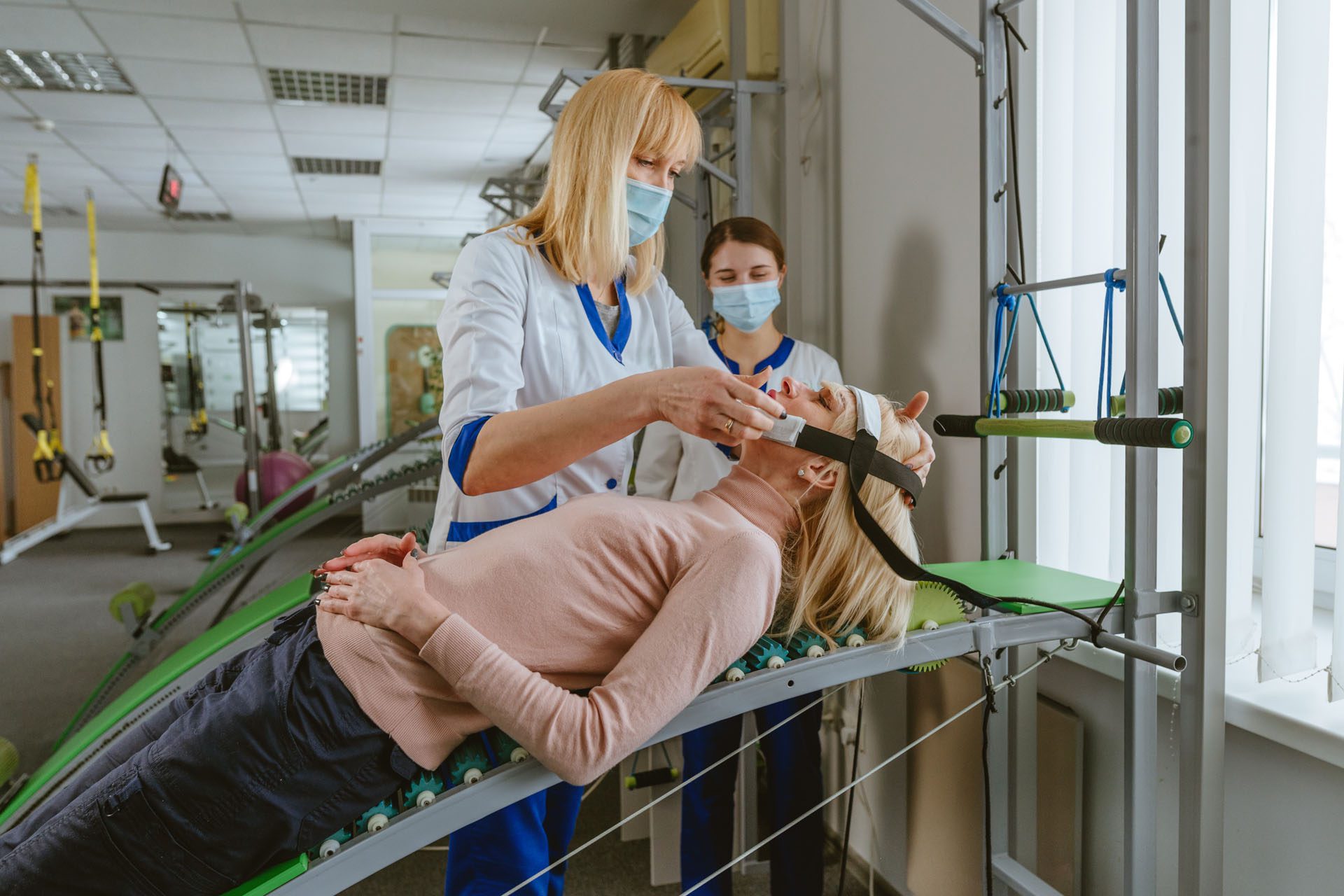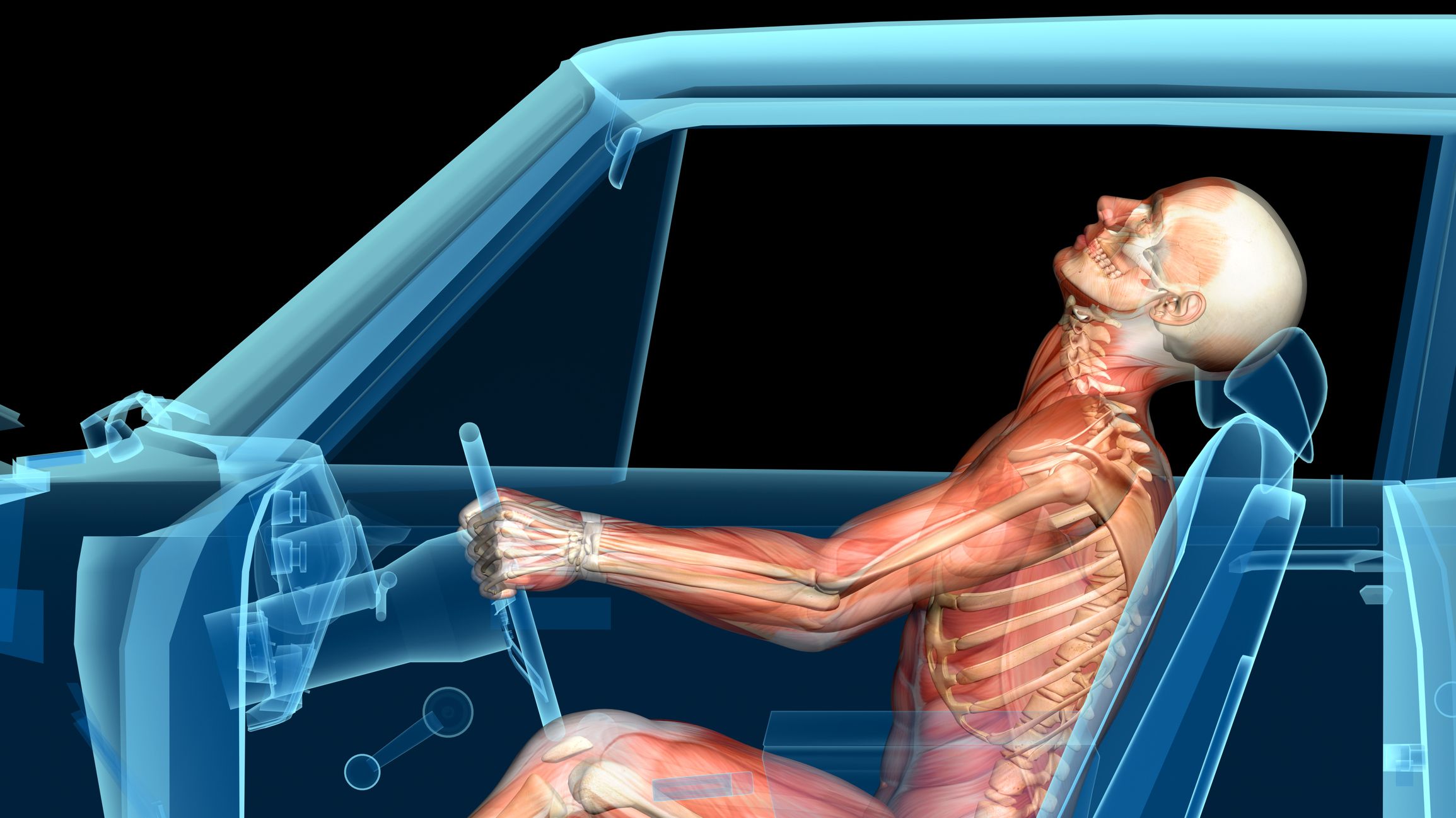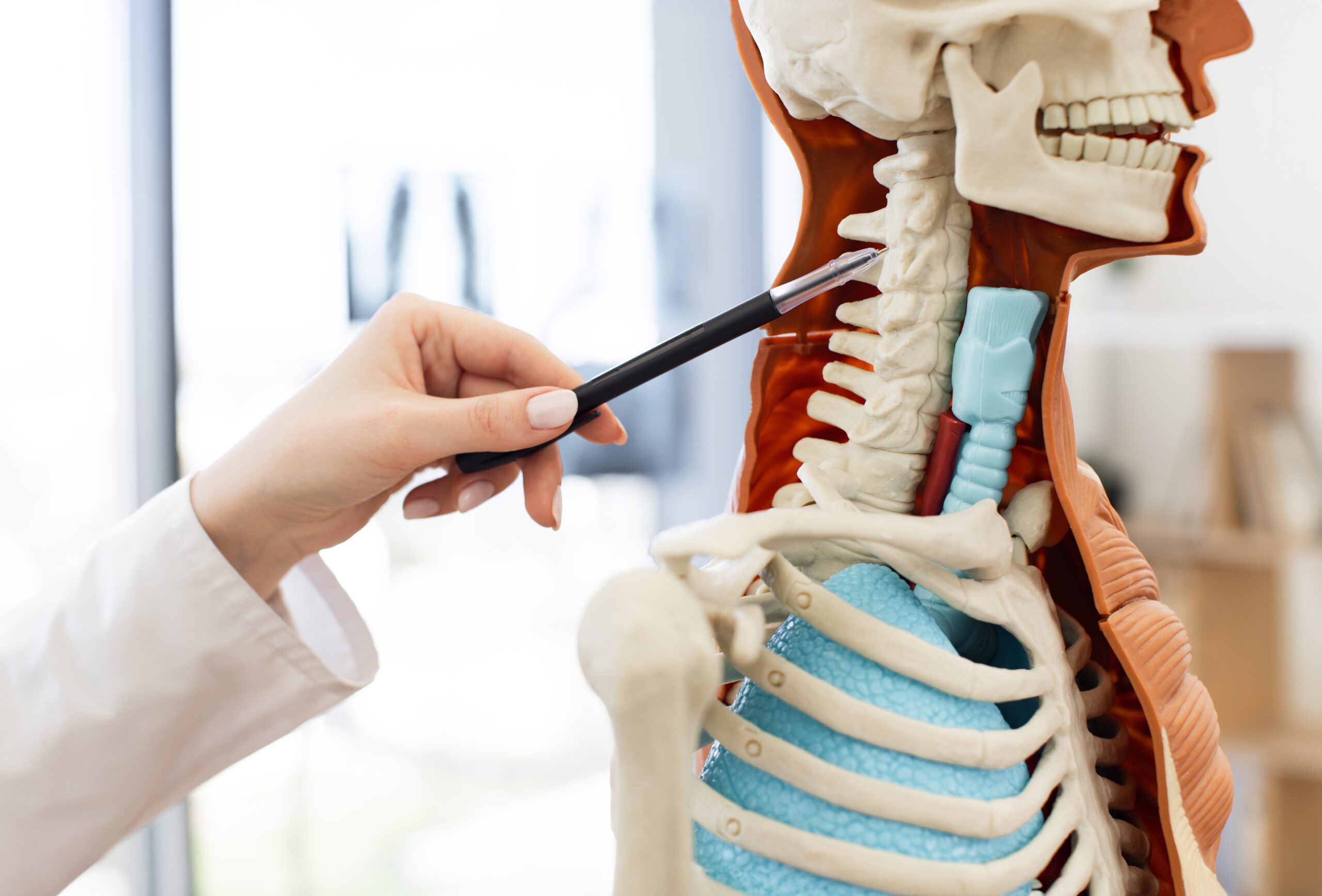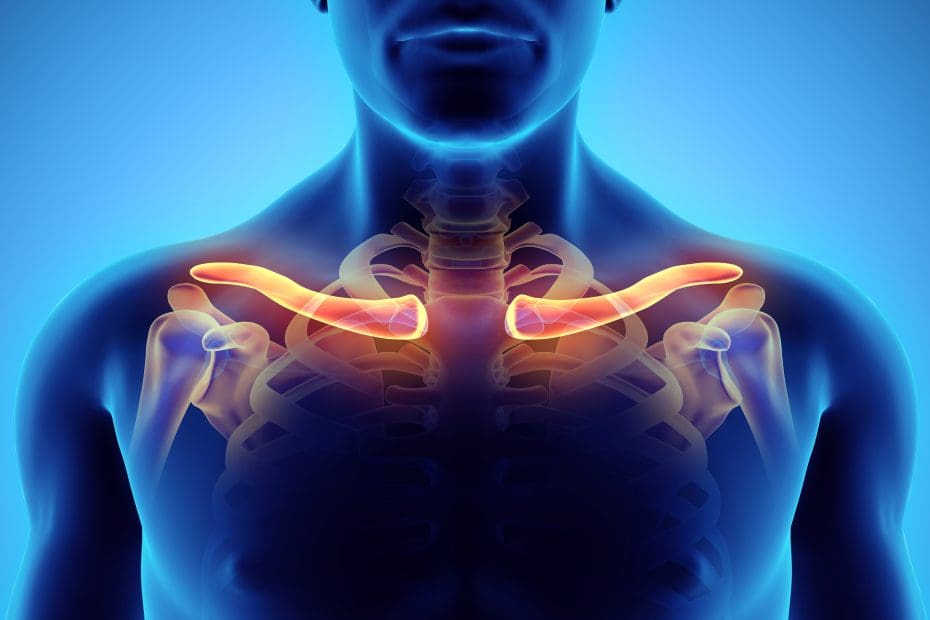Auto Injuries: What You Need to Know About TMJ Disorders
Understand the relationship between TMJ disorders associated with auto injuries and how to support your jaw health post-accident.
TMJ Disorders and Neck Pain from Motor Vehicle Accidents: A Comprehensive Guide
Introduction
Picture this: you’re cruising down the road, maybe humming along to your favorite tune, when—BAM!—a car rear-ends you. Your head snaps back like Herman Munster trying to dodge a lightning bolt, and suddenly, your neck and jaw aren’t feeling so groovy. Motor vehicle accidents (MVAs) can leave you with more than just a dented bumper; they can lead to temporomandibular joint (TMJ) disorders, often accompanied by neck pain. These conditions can turn simple tasks like chewing or chatting into a real pain in the… well, jaw and neck! In this comprehensive guide, we’ll dive into the clinical reasons behind TMJ disorders linked to neck pain from MVAs, explore their symptoms, discuss nonsurgical treatments, and spotlight the expertise of Dr. Alexander Jimenez, a top chiropractor in El Paso, Texas, who helps accident victims get back to their happy, pain-free selves. With over 5,000 words of insights, we’ll keep it clear, engaging, and at a high school reading level, with a sprinkle of humor to lighten the load—Herman Munster style!
What is a TMJ Disorder?
The temporomandibular joint (TMJ) is like the hinge on a creaky old door, connecting your jawbone to your skull just in front of your ears. It’s what lets you chomp on a burger, yak with your friends, or yawn dramatically during a boring movie. When this joint or its surrounding muscles and ligaments go haywire, you’ve got a TMJ disorder, also called temporomandibular disorder (TMD). These disorders can cause a range of issues, from mild discomfort to pain that makes you wince like Herman Munster stepping on a Lego.
Causes of TMJ Disorders
TMJ disorders can stem from various culprits, including:
- Jaw Injury: A direct hit to the face or jaw, like in a sports mishap or MVA.
- Arthritis: Conditions such as osteoarthritis or rheumatoid arthritis can inflame the joints.
- Teeth Grinding (Bruxism): Clenching your jaw like you’re auditioning for a grumpy cat role can strain the TMJ.
- Stress: Tense muscles from stress can cause the jaw to tighten.
- Motor Vehicle Accidents: Whiplash or trauma from a crash can mess with the TMJ, even if your jaw wasn’t directly hit.
Common Symptoms
TMJ disorders can throw a wrench into your daily routine with symptoms like:
- Pain in the jaw, face, or neck
- Difficulty or discomfort while chewing or speaking
- Clicking, popping, or locking of the jaw
- Headaches, especially around the temples
- Ear pain, ringing (tinnitus), or a feeling of fullness
- Dizziness or vertigo
These symptoms can be a real drag, especially when they team up with neck pain from an MVA. Let’s explore how car accidents play a role in this jaw-dropping drama.
References
- James W. Massa, D.D.S. (2025). Symptoms, Causes, and Effective Treatments for TMJ Injury. TMJ Injury
How Motor Vehicle Accidents Cause TMJ Disorders
Imagine your head whipping back and forth in a car crash, like Herman Munster trying to shake off a bad dance move. This motion, known as whiplash, is a common result of motor vehicle accidents (MVAs), especially rear-end collisions. Whiplash doesn’t just give your neck a workout; it can also stress out your TMJ, leading to disorders that sneak up on you like a sneaky ghoul.
Mechanisms of Injury
Here’s how MVAs can lead to TMJ trouble:
- Whiplash Impact: The rapid back-and-forth motion of the head during a crash stretches and compresses neck muscles and ligaments. This can tug on the TMJ, causing inflammation or even displacing the joint’s cushioning disc.
- Direct Trauma: If your face or jaw takes a hit—say, from an airbag or dashboard—it can directly injure the TMJ.
- Referred Pain: The neck and jaw are like neighbors who share a fence. Pain from a neck injury can “spill over” to the jaw due to shared nerve pathways, making you feel TMJ symptoms even without a direct jaw hit.
Research backs this up. A study found that 44% of people with whiplash-associated disorders (WADs) reported TMJ symptoms, compared to just 14% of those without such injuries (Friedman & Weisberg, 2009). Another study using MRI scans showed that TMJ disc displacement is more common in MVA patients, suggesting a direct link between crash-related trauma and jaw issues (Garcia & Arrington, 1996).
References
- Friedman, M. H., & Weisberg, J. (2009). The relationship of whiplash injury and temporomandibular disorders: A narrative literature review. Journal of Oral Rehabilitation. PMC Article
- Garcia, R., & Arrington, J. A. (1996). Magnetic resonance imaging studies of the TMJ after motor vehicle accidents. Journal of Craniomandibular Disorders and Facial Oral Pain.
Chiropractic Care After Accidents & Injuries- Video
Symptoms of TMJ Disorders After a Car Accident
After an MVA, your jaw and neck might start acting like they’re auditioning for a horror movie, with symptoms creeping in slowly or hitting you like a bolt from the blue. These symptoms can make everyday tasks feel like a chore, so knowing what to look for is key.
Key Symptoms
- Jaw Pain: Aching or sharp pain in the jaw joint or muscles, which might feel like Herman Munster’s neck after a long day at the funeral parlor.
- Neck Pain: Stiffness or soreness in the neck, often linked to whiplash.
- Difficulty Chewing or Speaking: Eating a sandwich or conversing may be uncomfortable or painful.
- Jaw Locking: Your jaw may become stuck, making it difficult to open or close your mouth, much like a rusty gate.
- Clicking or Popping Sounds: Noises that occur when you move your jaw, indicating a possible displaced disc.
- Headaches: Frequent headaches in the temple or eye area, sometimes triggered by jaw tension.
- Ear Symptoms: Pain, ringing, or fullness in the ears, which can be mistaken for an ear infection.
- Dizziness or Vertigo: Feeling off-balance, which can tie back to TMJ dysfunction.
These symptoms may not appear immediately after the accident. Sometimes, they take weeks or months to appear, like a slow-motion monster emerging from the fog. If you’re noticing these signs, it’s time to call in the pros.
References
- Truitt Law Offices. (2021). Can a Car Crash Cause TMJ? Car Crash TMJ
- Florin|Roebig. (2021). Jaw Pain After a Car Accident. Jaw Pain
Clinical Rationale for TMJ Disorders and Neck Pain
Why do neck pain and TMJ disorders go together like Herman Munster and his trusty bolt? It’s all about anatomy, nerves, and biomechanics. The neck and jaw are like two peas in a pod, and when one gets hurt, the other often feels the pain.
Why They’re Connected
- Anatomical Proximity: The TMJ is situated close to the cervical spine, and the muscles and ligaments that support the jaw are connected to the neck. A neck injury can tug on these structures, stressing the TMJ.
- Neurological Links: The trigeminal nerve (responsible for the jaw and face) and the cervical nerves (located in the neck) share pathways. Pain in the neck can trick your brain into feeling pain in the jaw, a phenomenon known as referred pain.
- Biomechanical Stress: Whiplash can disrupt your neck’s alignment, leading to a forward head posture that puts extra strain on the TMJ, much like piling too many coffins on Herman’s shoulders.
- Muscle Spasms: Neck injuries often cause muscle spasms that can radiate to the jaw, tightening the muscles and causing TMJ pain.
Studies support this link. For example, research in BMC Musculoskeletal Disorders noted that neck pain from whiplash can refer pain to the temporomandibular joint (TMJ), increasing the likelihood of disorders (Hauser, 2025). MRI studies also show that TMJ disc displacement is more common in MVA patients, reinforcing the connection (Garcia & Arrington, 1996).
Table: Factors Linking Neck Pain and TMJ Disorders
| Factor | Description |
|---|---|
| Anatomical Proximity | TMJ and cervical spine share muscles and ligaments, so neck injuries affect the jaw. |
| Neurological Connections | Shared nerve pathways cause referred pain from neck to jaw. |
| Biomechanical Stress | Shared nerve pathways cause referred pain from the neck to the jaw. |
| Muscle Spasms | Whiplash alters neck alignment, thereby stressing the temporomandibular joint (TMJ). |
References
- Hauser, R. (2025). TMJ: The Other Symptoms: Neck Pain, Muscle Spasms. Caring Medical
- Garcia, R., & Arrington, J. A. (1996). Magnetic resonance imaging studies of the TMJ after motor vehicle accidents. Journal of Craniomandibular Disorders and Facial Oral Pain.
Nonsurgical Treatments for TMJ Disorders
Good news: you don’t need to go under the knife to tame your TMJ troubles! Nonsurgical treatments can work wonders, especially when paired with neck pain relief. Here’s how to get your jaw and neck back in action, Herman Munster style—without the bolts.
Effective Treatment Options
- Chiropractic Care: Chiropractors, such as Dr. Alexander Jimenez, use spinal adjustments to realign the neck, thereby reducing TMJ stress. Manual manipulation and exercises can also strengthen jaw muscles, like giving your jaw a gym membership.
- Physical Therapy: Therapists design programs to enhance jaw mobility and alleviate pain, utilizing tools such as ultrasound or electrical stimulation to reduce inflammation.
- Medications: Over-the-counter pain relievers (e.g., ibuprofen) reduce pain and swelling. Muscle relaxants or anti-anxiety meds may help with spasms or stress.
- Oral Splints or Mouthguards: Worn at night, these devices prevent teeth grinding and align the jaw, like a cozy pillow for your TMJ.
- Lifestyle Changes: Avoid extreme jaw movements (no chomping on giant jawbreakers!), eat soft foods, and try stress-busting techniques like meditation.
- Acupuncture: This ancient practice can help relax muscles and alleviate pain, providing relief for some patients.
These treatments tackle both TMJ and neck pain, addressing the root causes for lasting relief. Always consult a healthcare professional to find the best plan for you.
References
- El Paso Chiropractor Blog. (2016). TMJ Caused by Auto Injuries. El Paso Chiropractor
- John A. Garza, D.D.S. (2023). Understanding the Connection Between TMJ and Neck Pain. TMJ and Neck Pain
Dr. Alexander Jimenez: A Beacon for Personal Injury Victims in El Paso
In the sunny city of El Paso, Texas, Dr. Alexander Jimenez, DC, APRN, FNP-BC, is like the Herman Munster of healing—big on heart and expertise! As a leading chiropractor and functional medicine practitioner, he specializes in treating TMJ disorders and neck pain resulting from motor vehicle accidents (MVAs), helping accident victims recover and get back on their feet.
Why Dr. Jimenez Shines
- Advanced Diagnostics: Dr. Jimenez utilizes cutting-edge imaging techniques, including MRI and CT scans, to pinpoint injuries with precision, ensuring that no detail is overlooked.
- Holistic Care: His dual-scope practice combines chiropractic adjustments with medical treatments to create personalized plans that address both symptoms and underlying causes.
- Legal Liaison: In personal injury cases, Dr. Jimenez bridges the gap between medical care and legal documentation, helping patients navigate insurance claims and legal processes while focusing on their recovery.
His practice, ChiroMed Integrated Medicine, offers a range of services, from chiropractic care to rehabilitation, tailored to MVA victims. Whether you’re dealing with jaw pain, neck stiffness, or both, Dr. Jimenez’s expertise makes him a trusted ally in El Paso.
References
- ChiroMed Integrated Medicine. (n.d.). Services at ChiroMed. ChiroMed Services
- Dr. Alexander Jimenez LinkedIn Profile. (n.d.). LinkedIn Profile
Conclusion
TMJ disorders and neck pain from motor vehicle accidents are no laughing matter, despite our Herman Munster-inspired chuckles. The connection between these conditions is clear: whiplash and other MVA injuries can stress the TMJ, leading to pain and dysfunction that affect daily life. Symptoms such as jaw pain, neck stiffness, and headaches can develop gradually, making early diagnosis crucial. Nonsurgical treatments, including chiropractic care, physical therapy, and lifestyle changes, offer effective relief for many patients. In El Paso, Dr. Alexander Jimenez stands out as a beacon of hope, utilizing advanced diagnostics and personalized care to aid accident victims in their recovery. If you’re experiencing jaw or neck pain after an MVA, don’t wait—seek professional help to prevent long-term issues and get back to living your best life.
Disclaimer: This blog post is for informational purposes only and should not be taken as medical advice. Always consult a qualified healthcare professional for diagnosis and treatment of any medical condition.
Key Citations
- Symptoms, Causes, and Effective Treatments for TMJ Injury https://www.jameswmassa.com/patient-education/tmj-injury/
- The relationship of whiplash injury and temporomandibular disorders: A narrative literature review https://www.ncbi.nlm.nih.gov/pmc/articles/PMC2786231/
- Can a Car Crash Cause TMJ? https://www.truittlawoffices.com/blog/can-a-car-crash-cause-tmj/
- Jaw Pain After a Car Accident https://florinroebig.com/car-accidents/types-and-injuries/jaw-pain/
- TMJ: The Other Symptoms: Neck Pain, Muscle Spasms https://caringmedical.com/prolotherapy-news/tmj-that-causes-cervical-neck-instability-and-poor-posture/
- TMJ Caused by Auto Injuries https://www.elpasochiropractorblog.com/2016/06/tmj-caused-by-auto-injuries.html
- Understanding the Connection Between TMJ and Neck Pain https://johnagarzadds.com/can-tmj-cause-neck-pain/
- Services at ChiroMed Integrated Medicine https://chiromed.com/
- Dr. Alexander Jimenez LinkedIn Profile https://www.linkedin.com/in/dralexjimenez/














